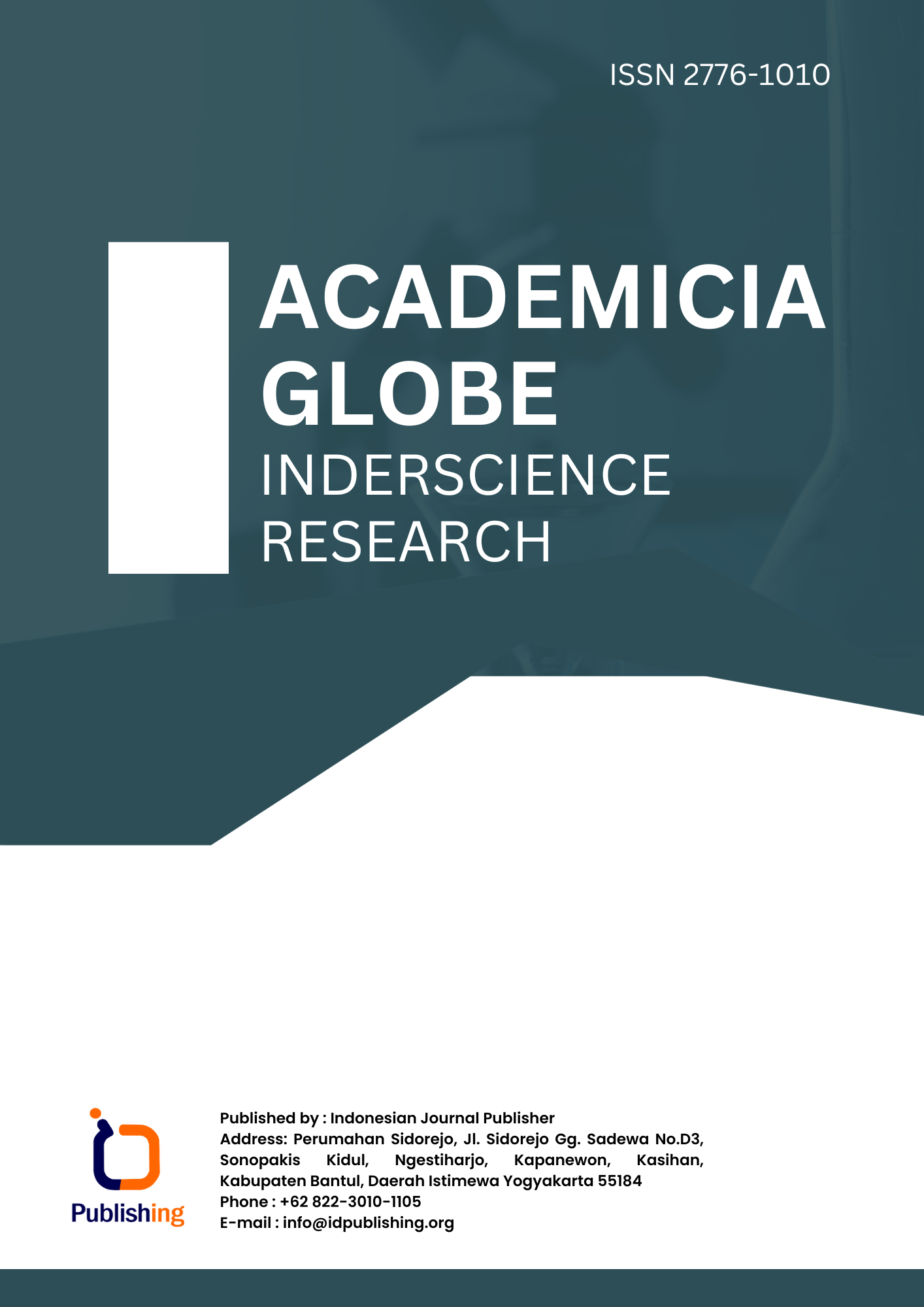Comparative Study of Toponyms In English and Uzbek Languages
DOI:
https://doi.org/10.47134/academicia.v2i1.14Keywords:
Toponymy, Geographical Objects, Linguistics, History, Culture, Translation Problems, English Toponyms, Uzbek Toponyms, Comparative Analysis, Origin, Structure, Historical FormationAbstract
The article substantiates the idea that the nature of place names is influenced by the structure of the language, its imagery, grammatical structure, interaction with other languages, as well as the natural environment in which native speakers live. The style of thinking, perception of the world through images and representations are reflected in the names of the geographical environment, their preservation and use in everyday life, as well as in artistic practice. The use of place names, their transfer from one language to another, and the nature of the distortions that occur depend on the group and language family to which they belong. This article examines the relationship of toponymy with linguistics, history, and geography. The study is devoted to the analysis of the role of toponyms not only in the designation of geographical objects, but also in the transmission of cultural, historical and linguistic heritage of peoples.
References
Cusidó, J. (2024). Assessing the Capability of Advanced AI Models in Cardiovascular Symptom Recognition: A Comparative Study. Applied Sciences (Switzerland), 14(18). https://doi.org/10.3390/app14188440 DOI: https://doi.org/10.3390/app14188440
Doecke, B. (2024). The Value Of Comparative Research In An Era Of Standards-Based Reforms: Sustaining a critically reflexive professional praxis. An Australian case study. L1 Educational Studies in Language and Literature, 24(2), 1–21. https://doi.org/10.21248/l1esll.2024.24.2.613 DOI: https://doi.org/10.21248/l1esll.2024.24.2.613
Fellows-Jensen, G. (1972). Scandinavian Settlement Names in Yorkshire.
Fu, L. (2024). What are the differences? A comparative study of generative artificial intelligence translation and human translation of scientific texts. Humanities and Social Sciences Communications, 11(1). https://doi.org/10.1057/s41599-024-03726-7 DOI: https://doi.org/10.1057/s41599-024-03726-7
G’aniyeva D., Mamataliyeva N. X. Semantical and morphological analysis of toponyms in english and uzbek languages //Modern Science and Research. – 2025. – Т. 4. – №. 2. – С. 1507-1513.
Jeong-Eun, K. (2024). Identifying underachieving students in English using TOEIC Bridge: A comparative study with the College Scholastic Ability Test English Section. English Teaching (South Korea), 79(2), 191–209. https://doi.org/10.15858/engtea.79.2.202406.191 DOI: https://doi.org/10.15858/engtea.79.2.202406.191
Khoudri, I. (2024). The use of ai in learning English: a comparative study between Moroccan and Indonesian undergraduate students from the English department. Edelweiss Applied Science and Technology, 8(4), 1271–1282. https://doi.org/10.55214/25768484.v8i4.1504 DOI: https://doi.org/10.55214/25768484.v8i4.1504
Mohsen, M. A. (2024). Artificial Intelligence in Academic Translation: A Comparative Study of Large Language Models and Google Translate. Psycholinguistics, 35(2), 134–156. https://doi.org/10.31470/2309-1797-2024-35-2-134-156 DOI: https://doi.org/10.31470/2309-1797-2024-35-2-134-156
Makhaev M. R. et al. Regional specificity of toponym semantics: psycholinguistic study //European Proceedings of Social and Behavioural Sciences. – 2019. DOI: https://doi.org/10.15405/epsbs.2019.03.02.116
Mirakmalov M. T. et al. Physical and geographical features of the toponyms of Uzbekistan //IOP Conference Series: Earth and Environmental Science. – IOP Publishing, 2023. – Т. 1284. – №. 1. – С. 012004. DOI: https://doi.org/10.1088/1755-1315/1284/1/012004
Murzayev, E.M. (1984). Ocherki toponimiki. Mysl’.
Pouplier, M. (2024). Language-specific and individual variation in anticipatory nasal coarticulation: A comparative study of American English, French, and German. Journal of Phonetics, 107. https://doi.org/10.1016/j.wocn.2024.101365 DOI: https://doi.org/10.1016/j.wocn.2024.101365
Qizi A. D. A. English and Uzbek toponymic phraseological unit: linguocultural //Eurasian Journal of Academic Research. – 2024. – Т. 4. – №. 5-3. – С. 194-197.
Qorayev, S. (1978). O’zbekiston toponimikasi. O’qituvchi.
Room, A. (2003). Place-name changes since 1900: A world gazetteer. McFarland.
Rusu M. S. Street naming practices: A systematic review of urban toponymic scholarship //Onoma Journal of the International Council of Onomastic Sciences. – 2021. – Т. 56. – С. 269-292. DOI: https://doi.org/10.34158/ONOMA.56/2021/14
Xodiyev, B. (1987). Toponimika asoslari. O’qituvchi.
Xudoyorova S. English and uzbek toponymic phraseological units: Linguocultural and historical aspects //International Journal of Linguistics, Literature and Culture. – 2021. – Т. 7. – №. 4. – С. 201-208. DOI: https://doi.org/10.21744/ijllc.v7n4.1426
Zemni, B. (2024). A Comparative Study of the Lexical Ambiguity of Arabic, English, and French in Natural Language Processing. Journal of Intercultural Communication, 24(1), 203–212. https://doi.org/10.36923/jicc.v24i1.171 DOI: https://doi.org/10.36923/jicc.v24i1.171
САФАРМУРОДОВА М. Т. Историко-сравнительное изучение топонимов в узбекский и английский языки //Актуальные научные исследования в современном мире Учредители: Общественная организация" Институт социальной трансформации". – С. 366-369.
Downloads
Published
How to Cite
Issue
Section
License
Copyright (c) 2025 Usmonova Shakhnoza Yokubjon kizi

This work is licensed under a Creative Commons Attribution 4.0 International License.





